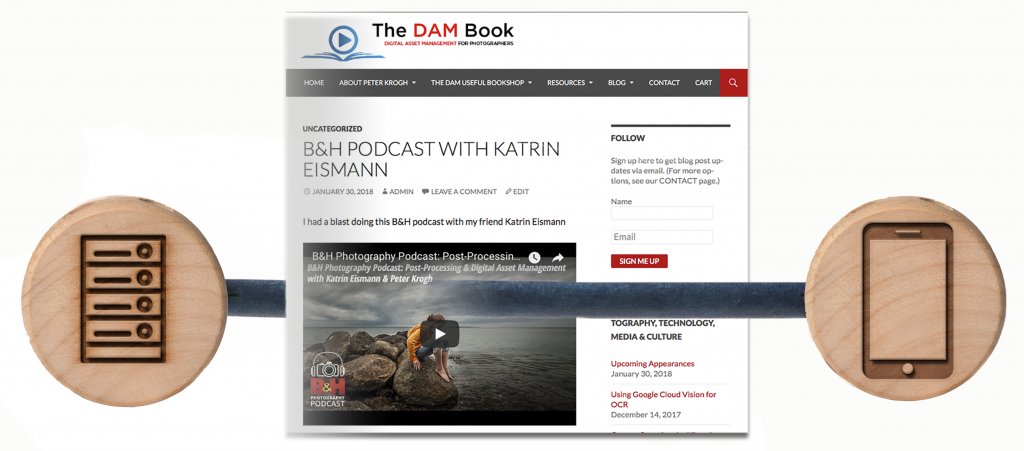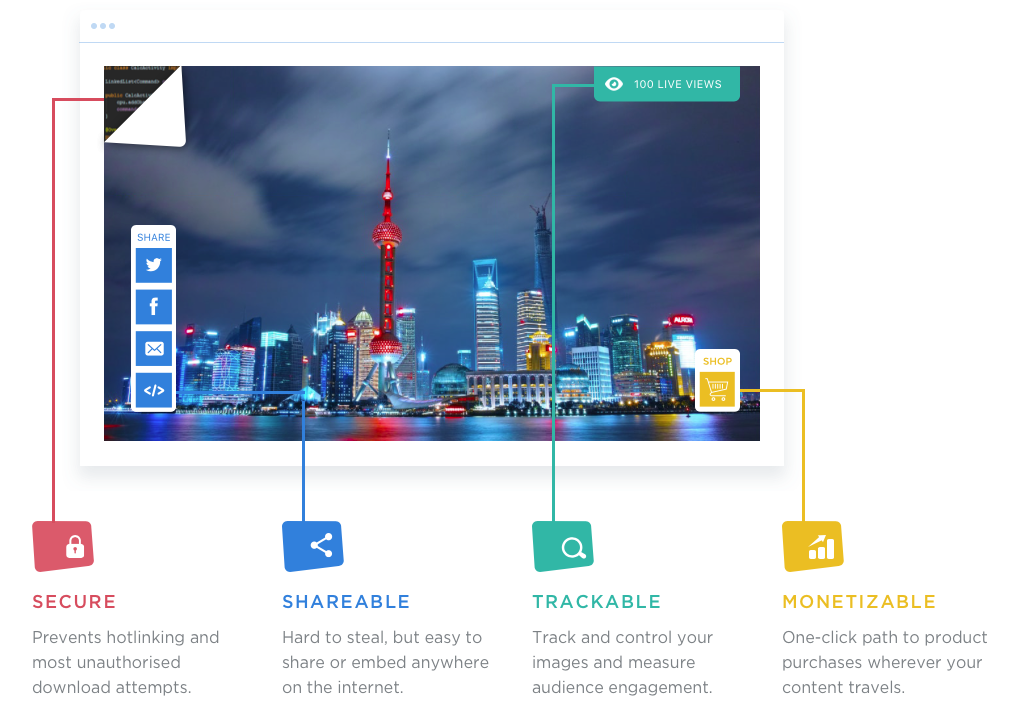This post is adapted from The DAM Book 3.0. In that book, I describe the ways that connectivity is changing the way we use visual images. In this post, I outline how embedded media can enable new kinds of connections between people, ideas and commerce.
As connected images become more essential for communication and engagement, image embedding creates a new opportunity to gather and disseminate information. A traditional web page uses images packaged up as JPEGs and sent out as freestanding files. But images can also be displayed using embedding techniques. Embedded images (like embedded videos), reside on a third party server and are displayed in a frame or window on another site’s web page. Embedded media offers a direct connection from the server, through the web page or application all the way to the end user. This can provide a two-way flow of information, as well as the ability to customize the embedded media to suit the needs of the end user with updates, custom advertising or other messaging.
Embedded media offers a direct connection from the server, through the web page or application all the way to the end user. This can provide a two-way flow of information, as well as the ability to customize the embedded media to suit the needs of the end user with updates, custom advertising or other messaging.
Let’s call these embedded objects, because they are actually more complicated than freestanding images. A YouTube video embedded on a web page is an example of an embedded object. The web page draws a box and asks the YouTube media server to fill that box with a video stream.
There is a live link which runs through the webpage, between the viewer’s device and the YouTube server. Because there is a link between YouTube and the viewer, there is a two-way
flow of data back and forth. This allows YouTube to gather all kinds of information, and it allows YouTube to also push out customized information through the window.
The media server can know who sees an image, how they got there, what they are interested in, who they interact with, what other sites they go to, what they search on and more. And the media server can present customized information to the end viewers based on what it knows about them. Remember, these windows are basically open pipelines that serve up the media on-demand.
Once only for video, now for still images too
Of course, the practice outlined above has been part of the business model for video services for a long time. Videos on web pages have historically been hosted by third-party servers, and we have been accustomed to YouTube ads for a decade. But it’s relatively new for still images, which could always be easily and cheaply added to web pages as JPEGs. The most significant marker for change was the introduction of free embedding by Getty Images.
When the stock photography giant decided to make vast numbers of images available for free embedding, it signaled that embedded objects were going to be an important part of its strategy moving forward. Getty has opened up millions of individual pipelines through blogs and other web pages, with the ability to collect and serve information in service of new business strategies.
The use case for images as platforms for two-way communication should be favorable moving forward. Mobile devices increasingly rely on photos instead of text headlines, and methods for connectivity are improving. In the last few years, we’ve seen several companies hang their business models on embedded image objects.
At this writing, Getty has gotten the most traction in such a service, but others are trying. Retailers are using embedded images as mini storefronts, and mission-driven organizations can use them to spread their messages in a viral manner.
What can you do with Embedded objects?
There are several valuable things you an do with embedded objet that are much harder or impossible with standard JPEGs.
• You can add a level of copyright protection that disables right-click saving.
• You can enable deep zoom features that are managed by the server.
• You can add purchase buttons or “more info” links directly onto the image.
• You can update the image when something changes (e.g. product updates.)
Okay, I’m interested – now what?
Making use of embedded media for still photos is an emerging capability. Several companies have taken a run at it, but none has fully cracked the code yet (and even Getty has not publicly disclosed how they intend to monetize the technology). SmartFrame is offering this embedding as a service that bolts on to your DAM. The thing I like about their business model is that it works in service of the image owner, not the middleman like Getty and YouTube do.
SmartFrame can help you with security, sharing, tracking and monetizing.
And the International Image Interoperability Framework is also building around this concept. (“Come for the deep zoom, stay for the great metadata interchange.”) I’ll have more on this project in another post.
I’m keeping close watch on this capability, and I’ll report as more information comes in. I first wrote about this topic in 2013 in this post.
